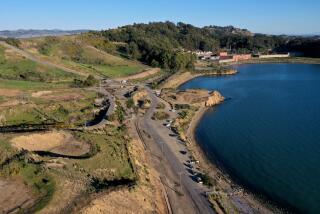Berkeley Bastion : People’s Park May Get a Final Chance to Clean Up Its Act
- Share via
BERKELEY — Shouting “Take the park,” thousands of students and community activists occupied a vacant plot of land near the UC Berkeley campus in 1969. They declared the area a “liberated zone” and dubbed it People’s Park.
When police officers and the National Guard tried to take the park back, a riot ensued in which one person was killed, more than 100 were injured--and the mythology of People’s Park was born.
The park has remained a point of contention. The university owns the land and wanted to build student housing on it. Neighbors want an end to the crime associated with the park. Community leaders and homeless people who live there want the park preserved as open space.
Now, 22 years later, the battle over what’s to become of People’s Park is nearing a conclusion.
The University of California Board of Regents is to vote this week on an agreement to give the city of Berkeley and the university joint control over the park, changing its look and mission. Together, they would have five years to clean it up, rid it of crime and litter and make it more inviting.
Under the agreement, the two agencies will install lights, bathrooms and other amenities. The university also plans to build volleyball courts or other facilities to attract students. Homeless people will still be welcome, but officials hope that they will no longer dominate the site.
If the regents reject the plan, or if the plan fails to improve the park after five years, the university would go through with its original proposal to build a dormitory on the site.
Students, city leaders and UC Berkeley officials say that they are all crossing their fingers, hoping that the plan will hold together.
“Our basic goal is to maintain People’s Park as a general-use facility for recreational purposes,” said Milton S. Fujii, UC Berkeley’s director of community relations. “People’s Park should be an open space area where everyone feels welcome.”
In 1969, the park--2.8 acres of trees, vegetable gardens and tall grass near Telegraph Avenue and Dwight Way--acquired an almostmystical reputation as a shrine of the counterculture. More recently, it has acquired another sort of reputation--as a hot spot for crime.
Homeless people began to sleep in the park during the early 1980s. Drug dealers and users followed, confident in the knowledge that no homeless person would call the police. That, in turn, drew a number of petty criminals, such as muggers, who thrive on the drug scene.
“An ‘anything goes’ atmosphere prevailed in the park,” said Kevin Werbach, leader of a group that represents 5,000 students who live in university dormitories. “Most students I know take care to avoid the park at night and even during the day.”
Neighbors’ complaints finally led the university last year to beef up the police presence in the park. Officers patrol the park continually during the day and forbid homeless people to sleep there at night.
The increased patrols, as well as plans to clean up the park, have drawn howls of outrage from transients, charity workers and political activists.
Also vocal have been some of the park’s founders. Lee Haber, who as a student took part in the 1969 demonstrations, said: “The dream of People’s Park is part of the treasure of Berkeley. . . . The park is something Berkeley has to keep in trust for the rest of the world.”
University and city officials say that they want to preserve as much of the dream as possible, but that major improvements are needed before the park can serve all people.
“I don’t think People’s Park will ever be just another city park,” said Councilwoman Carla Woodworth. “But it can retain that character and still be useful to the community.”
More to Read
Sign up for Essential California
The most important California stories and recommendations in your inbox every morning.
You may occasionally receive promotional content from the Los Angeles Times.













